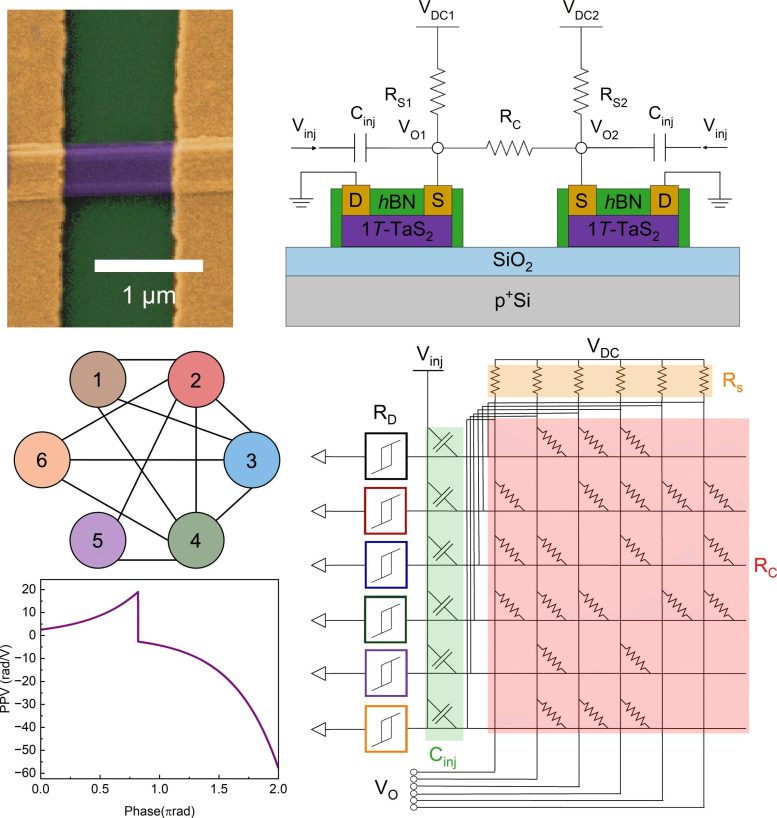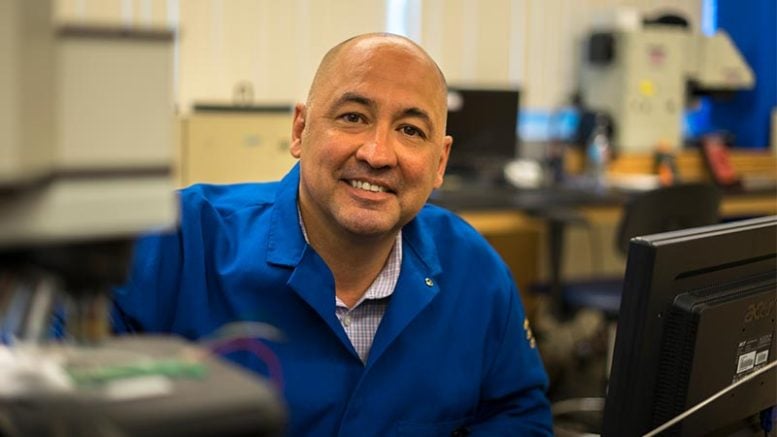Experimental device harnesses quantum properties for efficient processing at room temperature.
Engineers are working to design computers capable of handling a difficult class of tasks known as combinatorial optimization problems. These challenges are central to many everyday applications, including telecommunications planning, scheduling, and route optimization for travel.
Current computing technologies face physical limits on how much processing power can be built into a chip, and the energy required to train artificial intelligence models is enormous.
A collaborative team from UCLA and UC Riverside has introduced a new strategy to address these limitations and tackle some of the hardest optimization problems. Instead of representing all information digitally, their system processes data through a network of oscillators — components that shift back and forth at defined frequencies. This architecture, called an Ising machine, excels at parallel computing, enabling many calculations to run at the same time. The solution to the problem is reached when the oscillators fall into synchrony.
Quantum properties at room temperature
In their report published in Physical Review Applied, the researchers described a device that relies on quantum properties connecting electrical activity with vibrations inside a material. Unlike most existing quantum computing approaches, which must be cooled to extremely low temperatures to preserve their quantum state, this device can function at room temperature.

“Our approach is physics-inspired computing, which has recently emerged as a promising method to solve complex optimization problems,” said corresponding author Alexander Balandin, the Fang Lu Professor of Engineering and distinguished professor of materials science and engineering at the UCLA Samueli School of Engineering. “It leverages physical phenomena involving strongly correlated electron–phonon condensate to perform computation through physical processes directly, thus achieving greater energy efficiency and speed.”
Materials linking quantum and classical physics
The research showed that oscillators naturally evolve to a ground state, in which they’re synced up, allowing the machine to solve combinatorial optimization problems.

Balandin and his colleagues used a special material to bridge the gap between quantum mechanics — counterintuitive rules governing interactions between subatomic particles — and the more familiar physics of everyday life. Their prototype hardware is based on a form of tantalum sulfide, a “quantum material” that makes it possible to reveal the switching between electrical and vibrational phases.
The new technology has the potential for low-power operation; at the same time, it can be compatible with conventional silicon technology.
“Any new physics-based hardware has to be integrated with the standard digital silicon CMOS technology to impact data information processing systems,” said Balandin, a member of the California NanoSystems Institute at UCLA, or CNSI. “The two-dimensional charge-density-wave material that we selected for this demonstration has the potential for such integration.”
Reference: “Charge-density-wave quantum oscillator networks for solving combinatorial optimization problems” by Jonas Olivier Brown, Taosha Guo, Fabio Pasqualetti and Alexander A. Balandin, 18 August 2025, Physical Review Applied.
DOI: 10.1103/zmlj-6nn7
The coupled oscillators in this research were built at the UCLA Nanofabrication Laboratory, jointly run by CNSI and UCLA Samueli, and tested in UCLA’s Phonon Optimized Engineered Materials laboratory.
The study was funded by the Office of Naval Research and the Army Research Office.
Never miss a breakthrough: Join the SciTechDaily newsletter.

